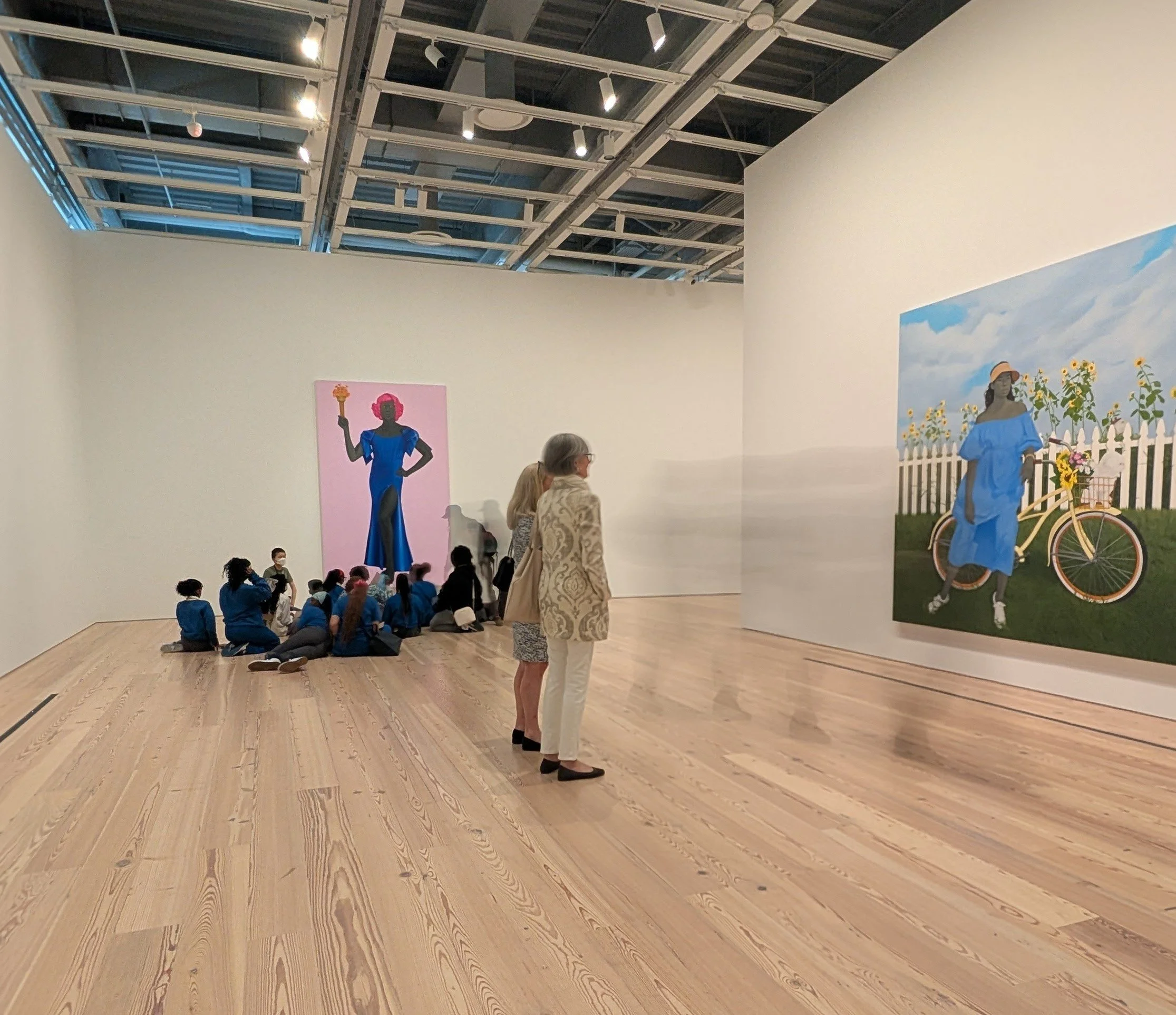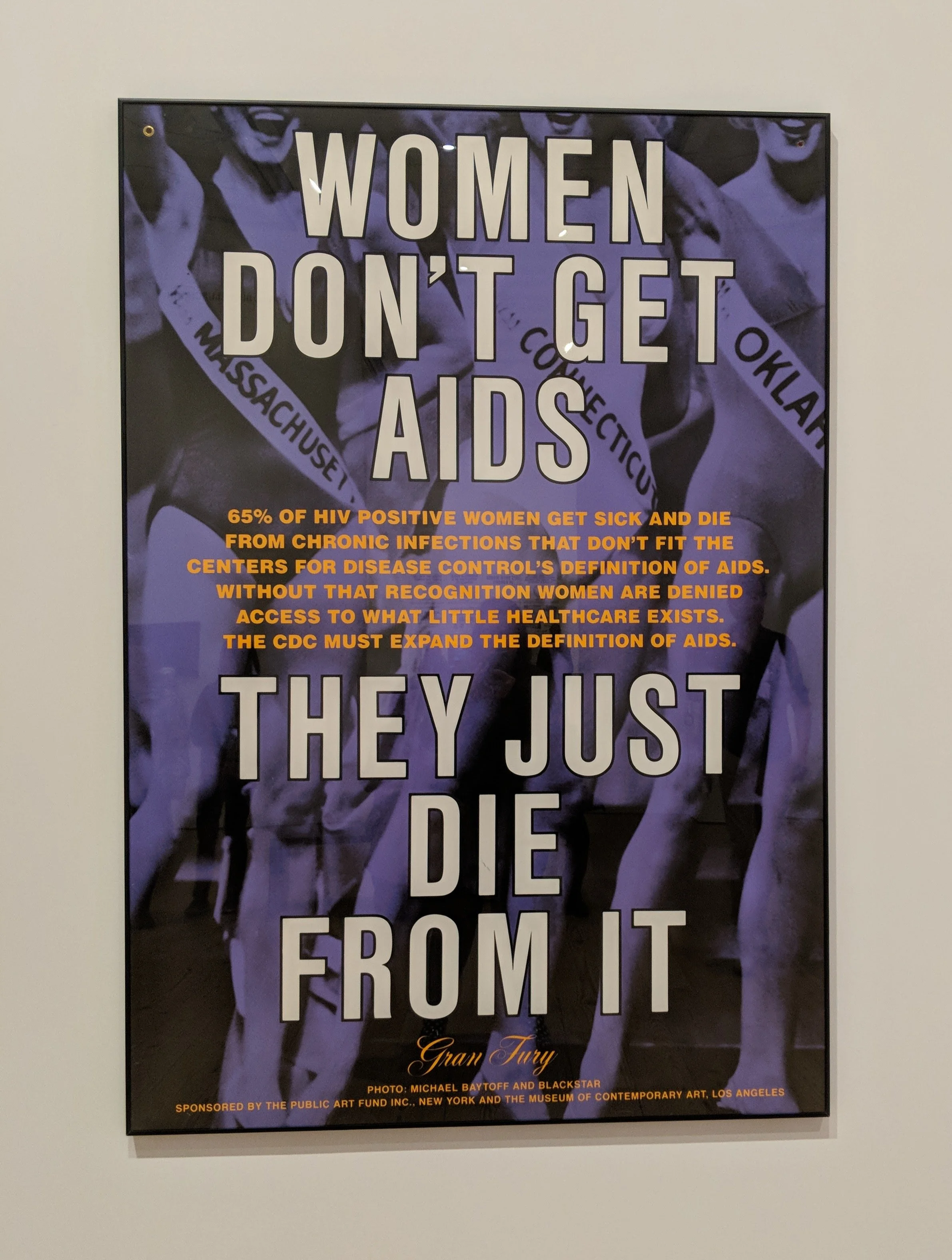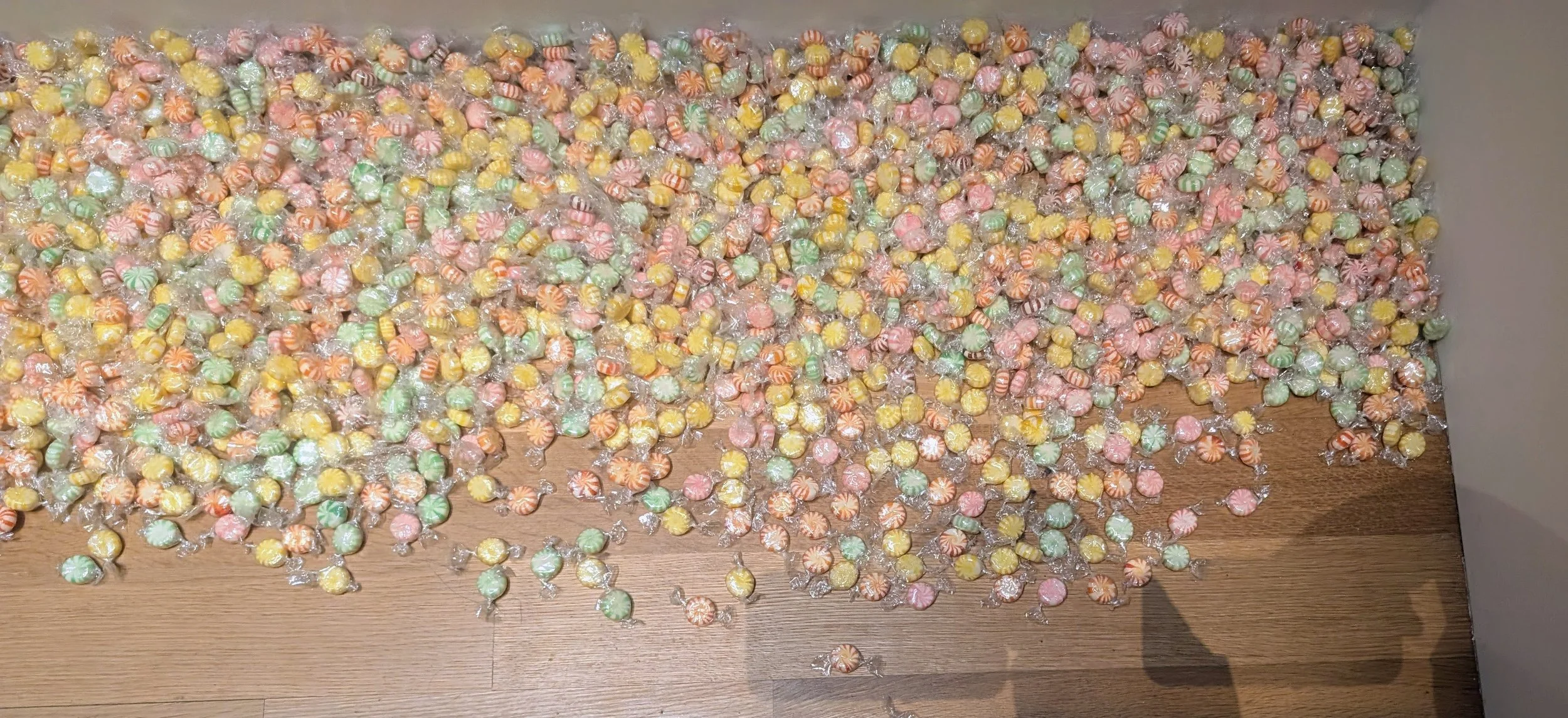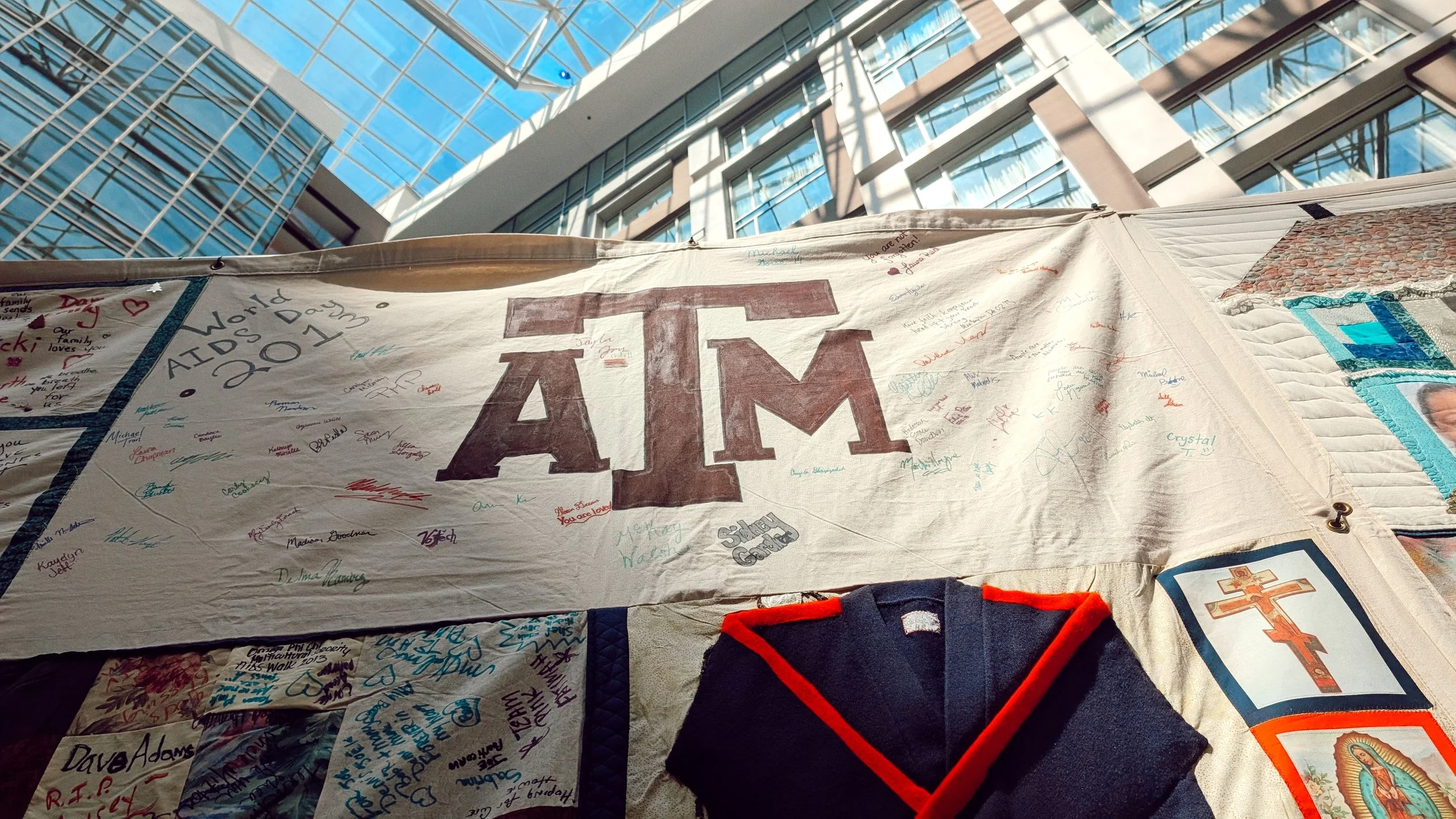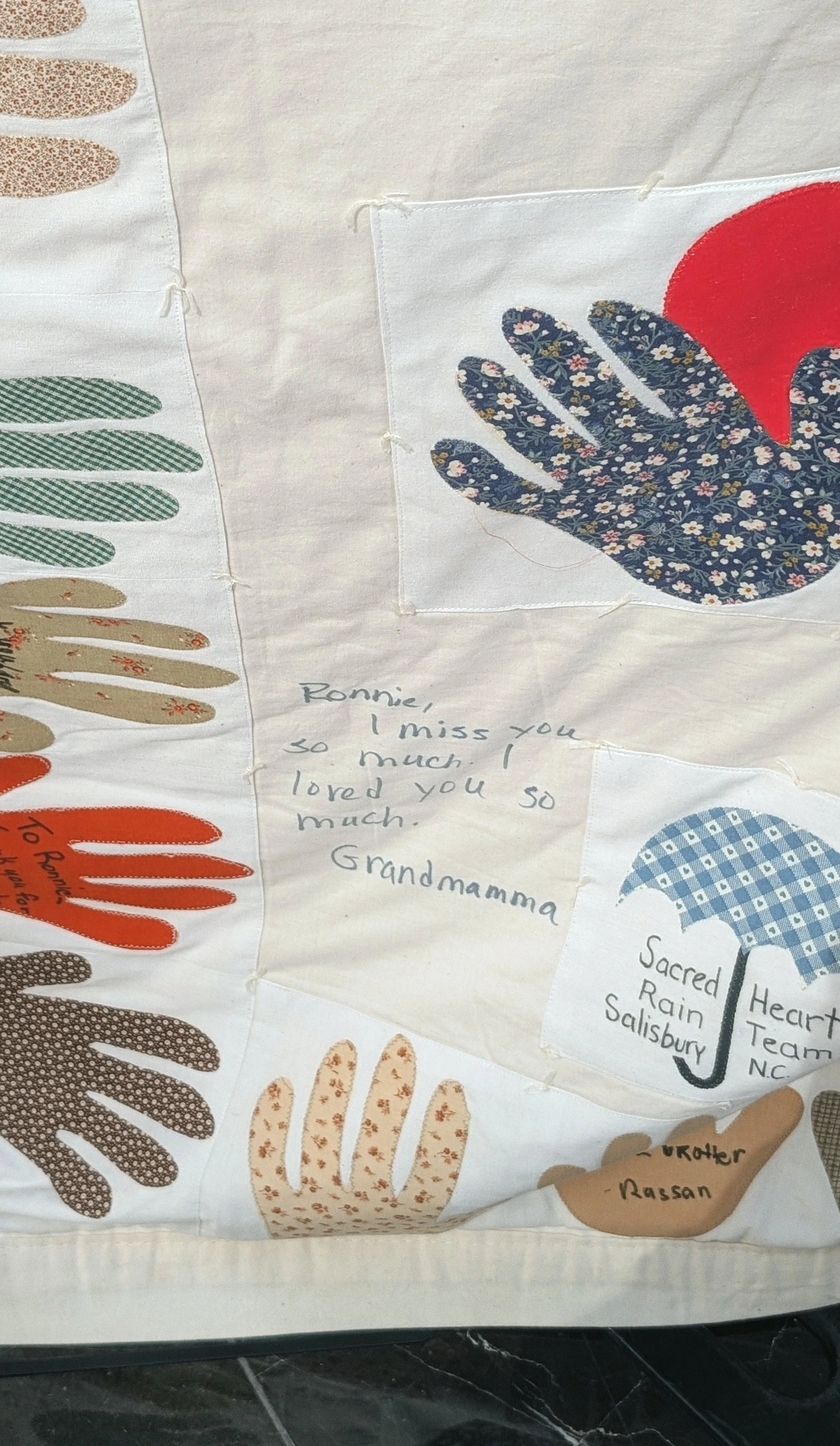The he(art) of the Movement
ID: An image if Jenna Ortega in Scream...screaming. the text says October update. Welcome to 2SLGBTQ+ History Month...only time will tell if the government will let us keep it..." there is a the link to past news: freedomoklahoma.org/news and a Freedom Oklahoma logo.
2SLGBTQ+ History Month 2025:
2SLGBTQ+ art, artists, & how they move us
These last few weeks have been pretty extra heavy. Which feels like it’s really saying something in the year 2025. We’ve somehow seen the attacks on our 2STGNC+ community escalate, and it has just generally sucked. Sugarcoating this moment feels disingenuous and a little impossible. So as we look to 2SLGBTQ+ history month, we’re thinking about the ways that our history can so often inform our present. Whether it’s the reminders we’ve been here before, the knowledge gained from generations before us, or the examples of the way we’ve still found joy through all of the bullshit…knowing 2SLGBTQ+ history, our intersectional movement history, can be life-giving.
You’ve seen lots of our 2SLGBTQ+ history recommendations over the years, and this year, as I thought about where I’m looking in these moments where practicing hope feels especially tough, I thought a lot about the 2SLGBTQ+ art and artists who get me through and the history captured and celebrated in the art we make.
Museum Art
Lately, we’ve seen museums at the center of censorship efforts by our federal government, as the places where we can see and experience art are increasingly targeted for allowing or centering art of or by 2SLGBTQ+ artists. This has been especially true of the Smithsonian Institutions, which as free museums open to the public provide access to art with less limitations than some paid art institutions. I think about what is on display and what isn’t (there’s so much art at museums that never sees a gallery wall), the barriers from place, to disability access, to cost…and still what it means when the art institutional status quo is yet again walking back the progress led by artists organizing for more access and accessibility of their art, especially that which is political and politicized. As I think about queer art in museum spaces and the stories about censorship of 2STGNC+ art and artists, here are a few of the pieces and stories that come to mind at this moment.
Related learning: Three Lessons from Artists’ Protests of the Whitney Museum in the 1960s–70s, This Berkeley MFA exhibition probes how museums and institutions exclude disabled bodies, Amy Sherald cancels Smithsonian Exhibition after a demand to censor show by pulling Trans Forming Liberty, a portrait of Arewà Basit, on Arewà Basit, on the opening at the Whitney, Amy Sherald remarks at HRC dinner
Amy Sherald, Trans Forming Liberty, 2024, on display at the Whitney 2025, photo by Cole McAfee (admission to the Whitney $30). ID: a group of school children sits on the floor in front of a portrait of a Black, trans woman as the Statue of Liberty in a blue dress on a pink background, in the foreground two people look at another Amy Sherald piece, with long exposure showing another person walking by in the space.
Because so much of Keith Haring’s art was unsanctioned and publicly accessible, I mostly experience his pieces through documented efforts or now on a wide variety of merch (with space for a long conversation about the access to the art vs the capitalism of it all). But in 2023 I got to see Amsterdam Notes back on display at the Stedelijk in Amsterdam where it was originally shown in 1986.
Related learning: The Dutch Adventures of Keith Haring, Haring was Here, Keith Haring coverage on CBS Sunday Morning
Keith Haring, Amsterdam Notes, 125 FT drawing from 1986 exhibition back on display at the Stedelijk Museum Amsterdam in 2023, photo by Cole McAfee (admission to the Stedelijk €22.50). ID: a panorama photo of a red bordered black drawings on white background hung high on the wall in a museum.
When I went to see Keith Haring at the Stedelijk, I wandered upon the incredible retrospective of the Canadian based art collective General Idea. Getting to experience their work, especially using art for AIDS advocacy, was an unexpected joy. And I’ve sought out more about them and their work since getting to view this exhibition.
Related learning: On General Idea as precursors to meme culture, General Idea: Art, AIDS and the fin de siècle, podcast episode on General Idea
From a retrospective of Canadian art group General Idea at Stedelijk Museum Amsterdam in 2023, photo by Cole McAfee (admission to the Stedelijk €22.50). ID: several pieces of art reading AIDS in different colors in the style of Robert Indiana’s LOVE sculpture.
I’ve spent a lot of intentional time learning about and from the community response to HIV/AIDS, particularly working to learn from folks living with HIV - those who fought for public health and community care while dying from the failure to provide treatment in response to HIV/AIDS. Which we’re seeing happen again today as funding is cut and folks experience increasing limitations to care including cost, surveillance, and stigma. Along the way, I’ve gotten to learn more about the work of Gran Fury, an artist collective that created some of the most provocative and memorable artwork many of us associate with early AIDS artivism. Getting to see their Women Don’t Get AIDS poster on display at the Whitney in 2018 as part of an exhibition titled An Incomplete History of Protest, really moved me and made me seek out more information about women in the HIV/AIDS movement and the work for inclusion that still is being fought today.
Related learning: It Was Vulgar and It Was Beautiful, Gran Fury Art Is Not Enough, Gran Fury's Tom Kalin on Hock E Aye VI Edgar Heap of Birds (various works by Edgar Heap of Birds on display at Oklahoma Contemporary through 2026), the Art of Resistance podcast episode on Gran Fury, the ACT UP historical archive
From artists Collective Gran Fury, 1991 bus shelter Women Don’t Get AIDS poster on display at the Whitney 2018, photo by Cole McAfee (admission to The Whitney $30). ID: poster with a background picture of pageant participants in bathing suits with state sashes, with text overlaid. It reads, “WOMEN DON’T GET AIDS . . . THEY JUST DIE FROM IT.” This text is underscored by a message printed in yellow that reads: “65% of HIV positive women get sick and die from chronic infections that don’t fit the Center for Disease Control’s definition of AIDS. Without that recognition women are denied access to what little health care exists. The CDC must expand the definition of AIDS.”
There’s something special about seeing the handwriting and notes of the folks who helped lay the groundwork for the movements we work within today. Seeing Bayard Rustin’s notes, in the same kind of train of thought outlines that litter my notes apps and notebooks felt so intimate, and such a special surprise to stumble upon in the small exhibition organized to celebrate James Baldwin’s 100th birthday at the Smithsonian National Portrait Gallery.
Related learning: on Rustin’s posthumous pardon for criminalized queerness, the Rustin Center, Making Gay History episode on Bayard Rustin
A photo of 1986 notes by Bayard Rustin on civil rights and gay identity from the Bayard Rustin Papers in the Manuscript Division of the Library of Congress, on display as part of a 100th Birthday Exhibition celebrating James Baldwin at the Smithsonian National Portrait Gallery spring 2025, photo by Cole McAfee (admission to the Smithsonian National Portrait Gallery free).
One thing I loved about this exhibition on Baldwin was all of the joy. We so often see queer folks forced to be serious, to be resilient. It’s equally lovely to see the moments where we get to be joyful, where we get to sit in joy with friends and movement comrades. I really loved these photos of Baldwin and Nina Simone because they spotlighted that joy.
Related learning: on James Baldwin’s blueprint for queer+ rights, on Baldwin’s queerness and Blackness being intwined, James Baldwin at 100, conversation between James Baldwin and Maya Angelou, a conversation between James Baldwin and Nikki Giovanni, on James Baldwin’s record collection, Baldwin’s 1963 address to teachers
Gelatin prints of 1965 photos of James Baldwin and Nina Simone by Bernard Gotfryd, the left and right prints are housed in the Smithsonian National Museum of African American History and Culture, center print in the Photographs and Print Division of the Schomburg Center for Research in Black Culture, part of the New York Public Library, Astor, Lenox, and Tilden Foundations on display as part of a 100th Birthday Exhibition celebrating James Baldwin at the Smithsonian National Portrait Gallery spring 2025, photo by Cole McAfee (admission to the Smithsonian National Portrait Gallery free).
When I visit the National Portrait Gallery, I never am particularly excited for the halls of white men who have ruled our country that draw so many visitors. But, just beyond the presidential portraits, there tends to be curated exhibitions of portraits of the kinds of folks fighting harm and injustice that I very dearly love. So while visiting this spring, it was a particular joy and learning opportunity to stumble upon a lightbox piece about Stormé DeLarverie at Stonewall by LJ Roberts, including a correction to a 2016 New York Times article about a possible Stonewall Monument that mentioned there was “at least one lesbian involved.”
Related reading: on Stormé, A Drag King's Journey From Cabaret Legend to Iconic Activist, Code Switch episode
Photo of Stormé at Stonewall, an installation by LJ Roberts on display at the Smithsonian National Portrait Gallery spring 2025, photographed by Cole McAfee (admission to the Smithsonian National Portrait Gallery free). ID: light boxes with cutouts from newspapers reading A correction was made on May 4, 2016: An earlier version of this article misstated the status of a “reconnaissance survey” on the Greenwich Village land, known as Christopher Park, a routine step before making any recommendation to the president. The survey has been completed, it had not just recently begun. An earlier version also overstated President Obama’s involvement in the creation of national parks. While he can create national monuments, he can only recommend national parks, which must be created by an act of Congress. The article also referred incompletely to the initial protesters at the Stonewall Inn. They were primarily gay men, not just gay men; there was at least one lesbian involved.A version of this article appears in print on May 4, 2016, Section A, Page 17 of the New York edition with the headline: Obama May Create Monument to Gay Rights Movement. With the smaller lightbox reiterating the note that at least one lesbian was involved. In the background there's images of people moving through the exhibition.
And, it was a big visit to the National Portrait Gallery for me, because I also bore witness to the museum’s choice to erase a key part of the narrative of Felix González-Torres "Untitled" (Portrait of Ross in L.A.). Not only did the museum fail to mention any of González-Torres’s AIDS activism in the introductory text to the retrospective, they specifically didn’t mention that Ross in this portrait is Ross Laycock, González-Torres’s partner who died of AIDS-related illness in 1991. And that the 175 pounds of candy represents Ross’s weight before he got sick, with the shrinking mass as people take candy representing the debilitating effects of Ross’s illness. I was aware of this going into the space because of Ignacio Darnaude’s call out of this blatant omission, and it was hard to sit with what it meant for all of the folks viewing this piece not to have its full context in their experience. The response from the Smithsonian and the Felix González-Torres Foundation sit as heavy reminders of how important it is to know our history, and to share the contexts those who write the narratives of culture and history choose to exclude.
Related learning: On the power of calling out the erasure of this narrative at the Art Institute of Chicago, on the erasure from POZ, Stuff About Things episode Felix Gonzalez-Torres, Clocks, & Candy, 40 million lives later: The dangers of erasing AIDS from the works of art it inspired, Queer and HIV erasure in museums, HIV media guidance
Photo of Felix González-Torres "Untitled" (Portrait of Ross in L.A.) on display at the Smithsonian National Portrait Gallery spring 2025 taken by Cole McAfee. ID: red, green, and yellow wrapped candies in a scattered pile along the floor.
There is no shortage of righteous critique about the Met Gala and the Metropolitan Museum of Art as an institution. And, when I was in NYC this summer, I could not resist going to see Superfine: Tailoring Black Style on display, particularly because of my love of fashion, and my particular love of the style of the late André Leon Talley who embodied Black dandyism.
Related learning: Queerty on Talley’s style and the 2025 Met Gala, André Leon Talley Was a Light of Hope & Now Also a Beautiful Warning, this essay by Saeed Jones, this podcast discussion on Talley between Saeed Jones and Zach Stafford, on the 2025 Met Gala theme
Caftan by Patience Torlowei from André Leon Talley’s wardrobe on view at the Met as part of 2025’s Superfine: Tailoring Black Style, photographed by Cole McAfee 2025 (admission to the Met $30). ID: Orange and black caftan over a bow tie and dress shirt with the beginning of a museum description about the displayed piece.
Unsanctioned/Guerilla Art: Wheatpasting, Graffiti, & Stickering
Now, I love a museum visit. I love that we live in a time where museums are working through the ethics of their existence, from repatriating stolen items, to accessibility of experience, to thoughtful curation that tells stories that have been long excluded or not considered art or told by folks other than those who are centered/represented in the art. But, for the ultimate art experience, I really love the power of unsanctioned art. Whether it’s graffiti, stickers in public spaces, wheatpasting, or other uses of public spaces to create and share art without the censorship of bureaucracy, I’m a fan. And while my camera roll contains hundreds of examples, here are a few recent pieces spotted out and about in the world that I stopped to admire.
Arm Trans Kids, painted on a wall on 23rd St Oklahoma City, photographed summer 2025 by Cole McAfee. ID: Arm Trans Kids sprayed next to a graffiti tag and a Reserved Parking sign, painted on a cream wall, with parking curbs and bits of grass visible at the bottom of the photo.
No ICE in OKC, spray painted on a utility box in the Plaza District, OKC, photographed summer 2025 by Cole McAfee. ID: No ICE in OKC spray painted in red on a metal box in the middle of other graffiti messages and tags.
Related learning: Aidan Chisholm’s history of wheatpasting in New York, The People's Billboard: Wheatpasting as a Tool of Resistance, The Cyberlaw Guide to Protest Art: Roadmap, A Very Queer Street Art Movement Is Spreading Across the US, A Collective of Lesbian Activists Is a Fierce Family, Shepard Fairey’s Subversive Civic Discourse
Murals & Public Art
While more often permitted, I also deeply love a mural, and it’s incredibly cool to live in a place where there is such dedication to mural culture. From Plaza Walls to Sunny Dayz Mural Fest, we’ve seen a real commitment to fostering mural arts in ways that honor the incredible work of the artists who add color to everyday spaces. And, because I am who I am, when I travel, I often try to research local mural collectives and efforts, seeking out particularly murals that are intentionally, explicitly political (because art is all political, but some less thoughtful about how so…). Here are a few murals I love, though FAR FAR from a complete collection of favorites.
Kristin Gentry (KreativeNative) painting an NDN Territory mural for Plaza Walls Mural Fest in 2024, photographed by Cole McAfee. ID: Kristin in pink shorts, blue socks, and a black tank top is holding a tray of paint, with a paintbrush mid stroke on a multicolored wall with floral designs, repeated diamond design, and a red stripe.
Karis Chambers for Plaza Walls 2024, OKC, photographed by Cole McAfee. A blue wall with a person with top surgery scars, short hair, glasses, sitting in shorts and shoes, appearing leaned against a wall, wrapped around a Plaza District door with a @KarisTheArtist tag on the mural.
Cole McAfee in front of Olly Costello’s Life At the Intersections in Andersonville, Chicago, fall 2024 photographed by Alexis Kinskey. ID: brick wall with a mural painted on wood in the majority of the frame, a blue background with a variety of community scenes, Cole standing in front in a multicolored skirt and red sweater, wearing a crossbody bag and holding a green Keith Haring bag.
Related learning: The Rise of Community Murals: Public Walls as Canvases of Resistance, PBS News Hour How Judy Baca's murals help recover history through 'public memory', Arrests, protests and sidewalk chalk: How Florida’s rainbow crosswalks became a political lightning rod, The Defacement and Destruction of Black Lives Matter Murals
Tattoos
We were lucky enough to have Ray Chel Stout-Hinch (chelsartistry) host a tattoo fundraiser for us this year, and I was lucky enough to get tattooed by him outside of that fundraising space for a piece that meant a lot to me personally. Tattoos have a long history in flagging and queer symbolism, and it feels cool to purposefully have queer art by queer artists on my body. Some of my personal favorite queer tattoos include:
ID: Cole in a black, blue, yellow, and peach sleeveless top, with their hands on a countertop at Elemental Coffee, wearing a blue mask, looking to camera, several tattoos visible, including a Keith Haring doodle with a flower head in the upper center of their arm. This Keith Haring piece tattooed by Alex. Photo by Bryan Terry for The Oklahoman.
ID: text at the top of the image “Now they’re taking away food stamps. These people who want the cuts-these people are making millions and millions and millions of dollars as CEOs. Why is the government going to take it away from us? What they’re doing is cutting us back. Why can’t we have a break? I’m glad I was in the Stonewall riot. I remember when someone threw a Molotov cocktail, I thought: “My god, the revolution is here. The revolution is finally here!” I always believed that we would have a fight back. I just knew that we would fight back. I just didn’t know it would be that night. Sylvia Rivera to Leslie Feinberg in a 1998 interview for Workers World” with a photo below showing a fresh tattoo of a Topo Chico bottle with fabric on fire and text My god, the revolution is here tattooed on a calf in front of a peacock colored couch. This piece honoring Sylvia Rivera tattooed by Ray Chel Stout-Hinch (chelsartistry).
Quilts & Fiber Arts
I have a soft spot for quilts and fiber arts. It's something about the intensive labor to create art that is beautiful and often also functional in ways that are necessary and comforting, and maybe my own blood, sweat, and tears that I have poured into quilting under the tutelage of my friend and multidisciplinary artist Katrina Ward. And still, I did not fully anticipate how moved I would be to experience the NAMES Project AIDS memorial quilt in person. But when I walked into the US Conference on HIV/AIDS in DC this September, I was moved. Maybe especially so because my eye was immediately drawn to a panel with a bold Texas A&M logo. As an Aggie grad, I am more used to being embarrassed by my alma mater than anything (the current news cycle which involves censorship and firing faculty over inclusive gender education being a prime example). But here was a piece of a commitment to a better future, rooted in justice and art on display for everyone. I spent about an hour looking at each of the panels on display at USCHA, admiring each artistic choice, the careful stitches, the loving words, the bright colors, all that served as a piece of a bigger, ongoing story of the fight for a future where we all have the health, resources, and community to thrive.
Texas A&M World AIDS Day 2013 panel for the NAMES Project AIDS Memorial Quilt. ID: a cream colored panel with a maroon block Texas A&M logo and text in the top left World AIDS Day 2013 and several signatures and messages, above another block that has a visible cardigan and several pieces of religious imagery on display with glass tiles visible above.
Photo of a corner of a quilt square in memory of Ronnie Smith 12/8/68-3/4/98, featuring a note from Ronnie's Grandmamma “Ronnie, I miss you so much. I loved you so much.” ID: close up of the corner of a quilt square with cut out hands in different fabrics, some signed, an umbrella with text Sacred Heart Rain Team Salisbury NC” and a written note on the fabric “Ronnie, I miss you so much. I loved you so much. Grandmamma”
I’ve always loved fiber art, but I can draw my real appreciation for quilts to Katrina Ward and the Oklahoma Quilt Memorial Project, in which I made my first quilt (and helped in several more. This quilt, pictured below, was something special, and intentional. As so many quilts, lovingly stitched, are. As part of their Community Remembrance Project, the Equal Justice Initiative the Community Soil Collection Project gathers soil at lynching sites for display at the Legacy Museum in exhibits bearing victims’ names. Because the soil remembers. Even when people would prefer to bury the truth. We wanted to evoke that sense of the stories rooted in the Tulsa soil, with Red Dirt, an improvisational quilt recognizing the death, destruction, and resilience the land that makes up Greenwood, past and present, has witnessed. This quilt was a project of both skill sharing and collaboration between Katrina Ward (she/they) who taught and guided novice quilter Cole McAfee (they/she) through construction of their first quilt. The quilt in and of itself displays a commitment to learning and growing together through each of its imperfections.
Zines
Our Freedom Oklahoma team is a big fan of zines and the way they let us practice creativity, share information, and connect with a medium that has long been important to our community. And in an era of increased digital surveillance, they allow us some less online ways to share important information. an intentionally anti-establishment and historically anti-capitalist effort to make and share art, engage with communities especially communities of marginalized and excluded folks, share information, and spark conversation. For all of these reasons and more, zines have always been especially popular in 2SLGBTQ+ community spaces. And we’re constantly seeking more ways to create zines as platforms to share information.
ID: screenshot of the Freedom Oklahoma zine archive, with 3 different zines, Love Letters to Trans Oklahomans 2024, Dear Nex With Love 2024, Love Letters to 2STGNC+ Oklahomans 2023.
And with the help of Zines for Queers workshop, our ED Cole made a zine for our annual Love Letters to Trans Oklahomans project that started a conversation about their interest in changing their name.
ID: screenshot of trans enough on finding a home in my body zine by Nicole McAfee, made for Trans Day of Visibility 2025, including a photo of Cole with a disco ball as part of a digital collage including quilts, pansies, and others on a green background.
Related learning: Queer Zine Archive Project, UCO's Melton Zine Library, Metro Library Special Collections, LGBT+ Cultural Heritage project, Queer Sex Ed Community Curriculum, LCC Zine Collection, Invisible History Zines, LGBTQIA zines for prin
I’ve always loved art, and thanks to so many incredible local artists, I’ve been able to explore art mediums myself as a place for expression and creation (I’m signed up for a beginning drawing class with Isa Rodriguez at Oklahoma Contemporary’s Studio School this fall, showing some photographs at DNA Galleries this November thanks to the encouragement of many friends, and am looking to learn some sewing fundamentals at Trove and Acid Lime in the coming months). And, it still blows me away every time a piece of art stops me in my tracks. When I get to see something and explore what it means and how it makes me feel. And so often, it’s queer art and queer artists who are at the center of those moments for me. The above reflections are far from a complete history or complete survey of mediums or even a complete collection of art and artists I love and look to and learn from. So, to accompany the above, here are a few more art and artist recommendations to explore this 2SLGBTQ+ history month and beyond.
A Vital Question for The Future of creating Liberation:
What else is helping expand your understanding of 2STGNC+ community, history, and art?
Ultimately, art is not enough. And art is at the heart of everything. So this month and beyond, seek out queer art and its history, our history. Make queer art, and help tell the stories of our movement, our community, of this moment in time and of the futures we are dreaming into being.
In Solidarity & Action,
ID: On a collage of scrap paper, there is a cutout of Mauree (left) handing a microphone to Cole (right), from the Freedom Futures Gala 2025. There is a paper moon behind M. and a sun behind Cole. They are both masked and also have cellphones in hand. Image by Steph Montelongo Cole McAfee | Executive Director | They / She
M. Turner | Director of Digital Organizing + Communications | They / Them
October Programming at Freedom Oklahoma
Queer joy is a gift 🌈✨Share it!
Join our Beyond Borders Pen Pal Program to spread that joy with other queer youth 💌 Visit here to sign up.
ID: A blue, felt background with stars and cloud-shaped stuffing. An envelope with multicolored sequins sits in the center. The Freedom Oklahoma logo and a collage-styled graphic reads "Beyond Borders Pen Pal Program."
Oklahoma youth 📢 join us this October 15th 4:30-5:30 PM CT to chat, find support, or anything else you might want! See you there 🎃✨
ID: An orange background with collage-inspired elements. Monochrome mouth, eyes, and green stars present with a hand drawn-looking embellishments. Text reads "October Youth Group" and "Thursday, October 9th 4:30 - 5:30 p.m." The Freedom Oklahoma logo is in the corner.
Join us for our October community groups for educators and caregivers! You can join us at any time to chat, get community updates, or get support.
Full Schedule:
Educators, Teachers, & School Staff - Tue, October 7th, 4:30-5:30 pm
Parents, Guardians, & Caregivers - Wed, October 8th, 4:30-5:30 pm.
ID: "virtual 2SLGBTQ+ Community Groups. Students & Youth: Thurs, April 10th, 6:00-7:00 pm. Educators, Teachers, & School Staff: Tue, April 15th, 4:30-5:30 pm. Parents, Guardians, & Caregivers: Wed, April 16th, 4:30-5:30 pm." on a background image from a trans rally at the OK Capitol with a green overlay.


